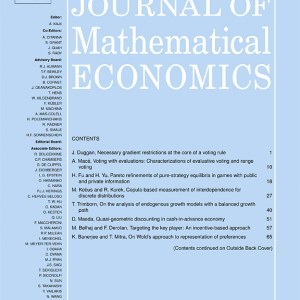
Boonen, T. and Liu, F. (2022). Insurance with heterogeneous preferences Journal of Mathematical Economics, 102:.
-
Affiliated authorTim Boonen
-
Publication year2022
-
JournalJournal of Mathematical Economics
This paper studies an optimal insurance problem with finitely many potential policyholders. A monopolistic, risk-neutral insurer applies linear pricing, and cannot discriminate in the insurance premium rate. The individuals are endowed with exponential expected utility preferences, and there is heterogeneity in the risk-aversion parameters. We study two models. In the first model the individuals can self-select their insurance coverage given the market premium rate. We find that partial or no insurance is generally optimal, and the premium optimization can be reduced to a piecewise concave problem. In the second model, the insurer offers only one insurance contract and individuals can either buy it or not. We show that it is optimal for the insurer to offer a full insurance contract. The premium optimization problem is reduced to a discrete problem, where the premium is an indifference premium of one individual in the market. Since the risk-aversion parameters of individuals are generally unobserved, we also present a simulation-based framework in which we simulate the risk-aversion parameters of the individuals. We show that the model with finitely many policyholders converges to the model with a continuum of potential policyholders when the number of potential individuals increases.